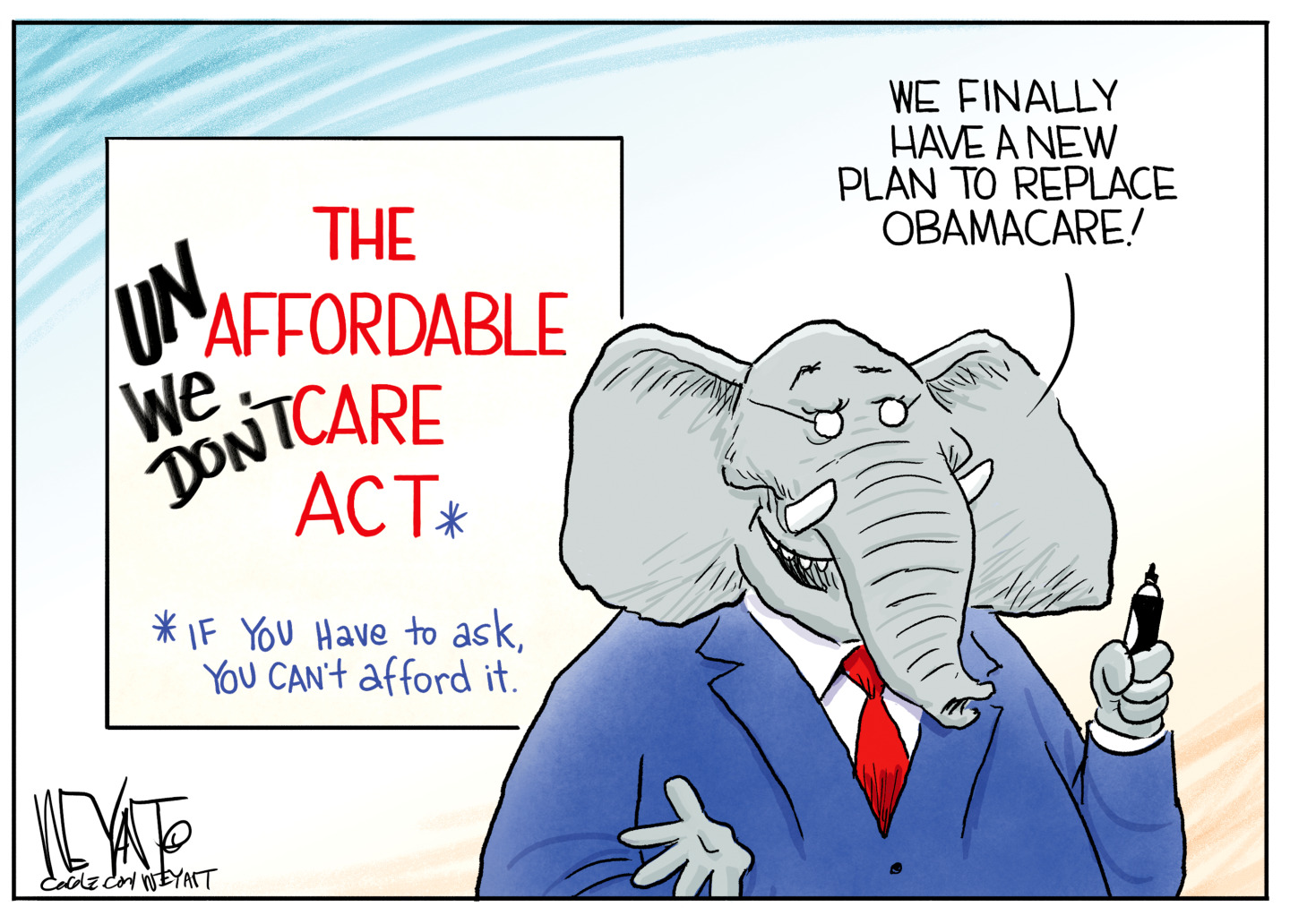Inside the Republican plan to catch up to Democrats on the internet


In a new episode of Political Wire's podcast, we spoke to Republican digital strategist Patrick Ruffini about how political campaigns present and future will change the way they use technology and data to better reach voters, winning their support and turning them out.
Here are five takeaways:
1. Campaigning is moving toward a digital era in which data will help campaigns reach the right voters more efficiently: Traditionally, campaigns defined universes of potential voters, and distinguished between winnable votes and non-winnable votes in a very binary way. "Either you’re in it or you’re outside it," Ruffini said. The explosion of data and analytics from social media and other online platforms is helping change that paradigm. Campaigns can now use these data to define in more probabilistic terms how persuadable voters are and what platforms and messages to use to target them. At the same time, these techniques aren't totally new. Even the 2004 Bush campaign used micro-targeting to an extent, and the Obama campaign managed to scale up their use significantly, especially in 2012. Said Ruffini: "What you see is these things that were at the fringe of campaigns all of a sudden becoming more and more prominent, more and more important, applied in new ways. And that in and of itself generates these tremendous results."
The Week
Escape your echo chamber. Get the facts behind the news, plus analysis from multiple perspectives.

Sign up for The Week's Free Newsletters
From our morning news briefing to a weekly Good News Newsletter, get the best of The Week delivered directly to your inbox.
From our morning news briefing to a weekly Good News Newsletter, get the best of The Week delivered directly to your inbox.
2. Democrats won the digital war in 2012, but Republicans are headed in the right direction: The Obama campaign outmuscled the Romney campaign in the digital realm, both in terms of the size of their email lists and online fundraising, and of how the campaigns used data and analytics to target voters more efficiently. Republicans have tried time and time again to boost their use of digital tactics. But a combination of the Republican National Committee's debt struggles after 2008 and its ongoing failure to build a permanent digital infrastructure have hampered the party's efforts: "What we’re seeing in general on the Republican side is lots of false starts, potentially, and not necessarily a lot of chance to institutionalize this digital culture." Republicans finally realize that they have to create that digital infrastructure. "I think Republicans are headed in the right direction," he said.
3. But it will take Republicans time — maybe not until 2016 or beyond: Even though Republicans have awoken to the reality that they have to address their digital deficits in more systematic ways, this renaissance won't happen overnight. Ruffini points to how long it took the Democrats to build up their own digital department: "It’s not like one day the Democrats decided to wave a magic wand and decide to do digital." Each campaign cycle that went by, they got better and better at it, he said. Republicans may not be able to make much progress in 2014, given that there are hundreds of campaigns that won't have the resources to support large data and analytics operations. "It’s a lot easier to do from a scale perspective at a national level, at a presidential campaign level," he said. 2016 will need to be a big year of progress for Republicans in the digital realm, he added.
4. This data-driven digital approach is both complex and far from perfect. But it's better than what campaigns used before. Campaigns won't be using data from one source by itself or only in one stage of the voter outreach and turnout process. "Probability is assigned to each element of the campaign to try to make campaigns smarter and actually makes them right more often than they’re wrong," he said. Even with that sophistication, these methods won't serve as campaign silver bullets. Said Ruffini: "I guess the point of analytics, the point of probability, is not that we’re going to get it right 100 percent of the time, it’s that we’re doing something that’s better than random [voter targeting]."
5. Don't forget about building lasting connections with voters: Figuring out how to target voters more efficiently is a different issue altogether from figuring out how to build a lasting connection with them. "You always have to ask, 'Wait a minute, did you actually create a lasting connection with that person?'" Ruffini said. "And I think campaigns in general feel that tension a lot." Digital campaigning methods like emails and Facebook posts carry the risk of helping in the short run but backfiring in the long run if they come off as gimmicky or manipulative in voters' minds. Ruffini noted that Obama campaign officials strongly emphasized that their outreach efforts didn't solely involve reaching as many persuadable voters as possible. Said Ruffini: "It goes back to this whole community organizing idea, about building these relationships with voters and supporters and recognizing that there really isn’t a difference between online and offline in that regard."
A free daily email with the biggest news stories of the day – and the best features from TheWeek.com
Listen to the entire interview here:
Subscribe to the podcast via iTunes or RSS to get episodes automatically downloaded.
Taegan D. Goddard is the founder of Political Wire, one of the earliest and most influential political websites. He also runs Wonk Wire and the Political Dictionary. Goddard spent more than a decade as managing director and COO of a prominent investment firm in New York City. Previously, he was a policy adviser to a U.S. senator and governor. Goddard is also co-author of You Won — Now What? (Scribner, 1998), a political management book hailed by prominent journalists and politicians from both parties. Goddard's essays on politics and public policy have appeared in dozens of newspapers across the country, including The Washington Post, USA Today, Boston Globe, San Francisco Chronicle, Chicago Tribune, Philadelphia Inquirer, and Christian Science Monitor. Goddard earned degrees from Vassar College and Harvard University. He lives in New York with his wife and three sons.
-
 A luxury walking tour in Western Australia
A luxury walking tour in Western AustraliaThe Week Recommends Walk through an ‘ancient forest’ and listen to the ‘gentle hushing’ of the upper canopy
-
 What Nick Fuentes and the Groypers want
What Nick Fuentes and the Groypers wantThe Explainer White supremacism has a new face in the US: a clean-cut 27-year-old with a vast social media following
-
 5 highly amusing cartoons about rising health insurance premiums
5 highly amusing cartoons about rising health insurance premiumsCartoon Artists take on the ACA, Christmas road hazards, and more
-
 Has Zohran Mamdani shown the Democrats how to win again?
Has Zohran Mamdani shown the Democrats how to win again?Today’s Big Question New York City mayoral election touted as victory for left-wing populists but moderate centrist wins elsewhere present more complex path for Democratic Party
-
 Millions turn out for anti-Trump ‘No Kings’ rallies
Millions turn out for anti-Trump ‘No Kings’ ralliesSpeed Read An estimated 7 million people participated, 2 million more than at the first ‘No Kings’ protest in June
-
 Ghislaine Maxwell: angling for a Trump pardon
Ghislaine Maxwell: angling for a Trump pardonTalking Point Convicted sex trafficker's testimony could shed new light on president's links to Jeffrey Epstein
-
 The last words and final moments of 40 presidents
The last words and final moments of 40 presidentsThe Explainer Some are eloquent quotes worthy of the holders of the highest office in the nation, and others... aren't
-
 The JFK files: the truth at last?
The JFK files: the truth at last?In The Spotlight More than 64,000 previously classified documents relating the 1963 assassination of John F. Kennedy have been released by the Trump administration
-
 'Seriously, not literally': how should the world take Donald Trump?
'Seriously, not literally': how should the world take Donald Trump?Today's big question White House rhetoric and reality look likely to become increasingly blurred
-
 Will Trump's 'madman' strategy pay off?
Will Trump's 'madman' strategy pay off?Today's Big Question Incoming US president likes to seem unpredictable but, this time round, world leaders could be wise to his playbook
-
 Democrats vs. Republicans: who are US billionaires backing?
Democrats vs. Republicans: who are US billionaires backing?The Explainer Younger tech titans join 'boys' club throwing money and support' behind President Trump, while older plutocrats quietly rebuke new administration
